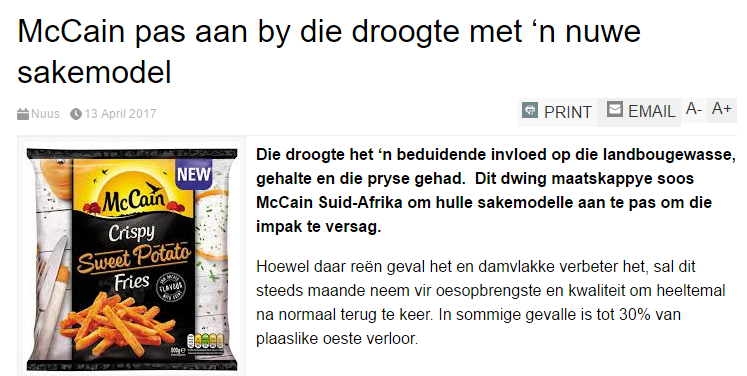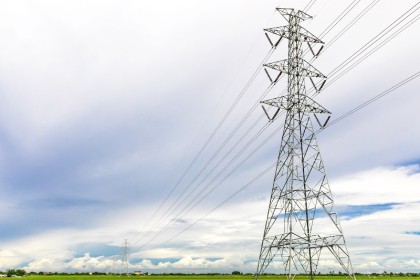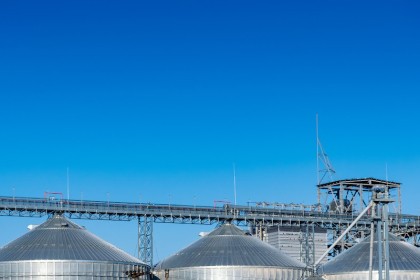
Drought: Placing Great Strain On Fresh Produce Markets
The effects that the drought has had on our farmers and their crop production is more severe than the average city dweller can imagine. Even though some dams have filled up from recent rainfall, it will still take a long time for crop production to reach the quantity and quality it used to boast.
The impact of drought does not only affect farmers’ incomes. In fact, drought will affect us on a national basis:
- Crops cannot grow and produce in abundance as they should.
- Lack of crops means fresh produce cannot be distributed to markets across the country as it should.
- Lack of crops also means pasture production of livestock is heavily affected.
- A deficit of pasture production leads to frail livestock that often does not survive, which means less meat on our shelves.
Read more on McCain’s fight against the drought.
Low crop production results in other agricultural industries falling at great losses too; some companies may even struggle to stay in business. This snowball effect means that the price and demand on produce increases because it is not readily available for stores to buy.
The effect of drought has a negative impact on every step in the cycle, from planting crops to selling food in stores. Consumers are faced with increased prices and low supplies since retailers have to hike their prices up to run a sustainable store.
Furthermore, the drought affects the state of our economy. If we do not have enough food to feed the people in our own country, we cannot export our produce in masses.
This also means that because our own produce is lacking, we may have to import more. Food import tax and inflation will rise, which will have an even higher impact on the price stamps on food in stores.
Farmers need to make use of any and all agricultural provisions that aim at improving crop produce.
Find a shade cloth manufacturer that specialises in shade-netting for farming purposes.














